Transporting a couch can be a daunting task, especially if you don’t have access to a large vehicle like a moving truck. In situations where you need to move your couch from one location to another, a pickup truck can come in handy. But the question remains: will a couch fit in a pickup truck bed?
It’s possible that a smaller couch or loveseat could fit in a pickup truck bed, especially if the truck bed is large and the couch can be angled or positioned in a way that allows it to fit within the bed’s dimensions.
In this article, my aim is to answer that question and provide tips and guidelines for safely and efficiently transporting a couch in a pickup truck bed.
Measuring the Couch
Measuring a couch accurately is crucial for successful transportation in a pickup truck bed. Here are some important factors to consider when measuring a couch:
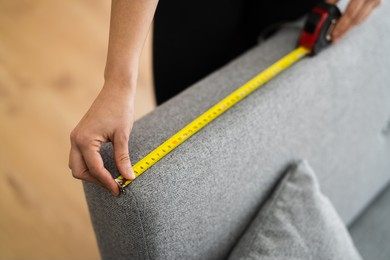
- Measure the length of the couch from the furthest point on each end. This will give you the overall length of the couch.
- Next, measure the height of the couch from the floor to the highest point, which is usually the top of the backrest.
- Finally, measure the depth of the couch from the front edge to the backrest.
It’s important to note that potential obstacles may arise when measuring a couch. For example, if the couch has a reclining feature or a chaise, these features will need to be accounted for in the measurements.
When choosing a couch for pickup truck transport, it’s important to consider the measurements of both the truck bed and the couch.
A couch that is too long or too wide may not fit in the bed, while a couch that is too tall may not be able to fit under the truck bed cover or overhang. It’s also important to consider the weight of the couch and whether it falls within the maximum weight capacity of your pickup truck.
Pickup Truck Bed Size and Dimensions

Pickup trucks come in a variety of sizes, and it’s important to know the dimensions of your truck bed before attempting to transport a couch or any other large item. Here are some key points to keep in mind when measuring your pickup truck bed:
- First, make sure your truck is on a flat surface and the tailgate is closed.
- Measure the length of the bed from the inside of the tailgate to the inside of the cab. This will give you the overall length of the bed.
- Next, measure the width of the bed at the widest point. This is usually at the rear of the bed, but some truck models have wider sections closer to the cab.
- Finally, measure the height of the bed walls from the floor to the top edge.
Once you have these measurements, you can compare them to the standard dimensions of pickup truck models to determine if your truck can accommodate a couch or other large item. Here are some common pickup truck models and their bed dimensions:
- Ford F-150: 5.5′, 6.5′, or 8′ bed length; 50.6″, 65.2″, or 72.8″ bed width; maximum payload capacity of up to 3,325 pounds.
- Chevy Silverado 1500: 5’8″, 6’6″, or 8′ bed length; 71.4″ or 81.2″ bed width; maximum payload capacity of up to 2,280 pounds.
- Ram 1500: 5’7″, 6’4″, or 8′ bed length; 66.4″ or 76.3″ bed width; maximum payload capacity of up to 2,300 pounds.
- Toyota Tundra: 5.5′, 6.5′, or 8.1′ bed length; 66.4″ or 75.2″ bed width; maximum payload capacity of up to 1,730 pounds.
Fitting the Couch in a Pickup Truck Bed
Once you have measured your pickup truck bed and the couch, it’s time to determine the best way to fit the couch in the truck bed. Here are some tips for fitting a couch in a pickup truck bed:
- Consider the orientation of the couch: Depending on the shape and size of the couch, it may be best to load it in a specific orientation in the truck bed. For example, a long, narrow couch may fit best if loaded in a horizontal position, while a wider, shorter couch may fit better vertically.
- Plan for safe loading and unloading: Before attempting to load the couch into the truck bed, make sure you have a clear path and that the couch can be safely lifted and moved. Use proper lifting techniques and consider enlisting the help of a friend or professional moving service if necessary.
- Secure the couch in the truck bed: Once the couch is loaded into the truck bed, it’s important to secure it properly to prevent it from shifting or falling out during transport. Use straps or ropes to tie down the couch to anchor points in the truck bed, such as tie-down loops or anchor points on the bed liner.
Here are some additional tips for safely securing a couch in a pickup truck bed:
- Use high-quality straps or ropes that are rated for the weight of the couch and that are in good condition.
- Avoid using bungee cords or other elastic materials, as these can stretch and allow the couch to shift during transport.
- Use multiple straps or ropes to secure the couch from different angles, as this can help prevent it from moving or tipping.
- Check the straps or ropes periodically during transport to ensure that they are still tight and secure.
By following these tips, you can safely and securely transport a couch in a pickup truck bed.
Common Types of Couches and Their Transportability
When it comes to transporting a couch in a pickup truck bed, it’s important to consider the characteristics of the couch itself. Here are some common types of couches and their characteristics:
Standard Sofa:
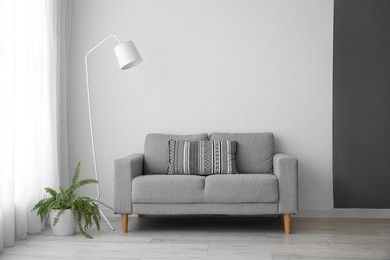
A standard sofa is typically around 84 inches in length, 34 inches in height, and 38 inches in depth. These dimensions can vary depending on the style and brand of the sofa.
Loveseat:
A loveseat is smaller than a standard sofa, usually around 60 inches in length, 34 inches in height, and 38 inches in depth.
Sectional Sofa:
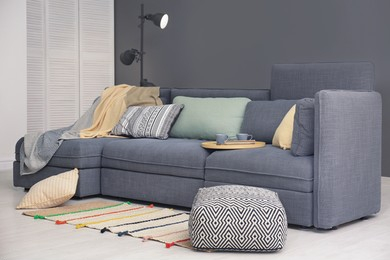
A sectional sofa is made up of multiple pieces that can be arranged in different configurations. The dimensions of a sectional sofa can vary depending on the number of pieces and the style.
Recliner Sofa:
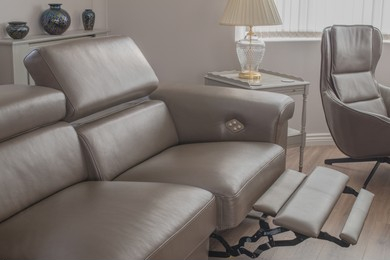
A recliner sofa has one or more seats that recline, allowing the user to lean back and relax. These sofas may be larger than standard sofas due to the reclining mechanism.
Sleeper Sofa:
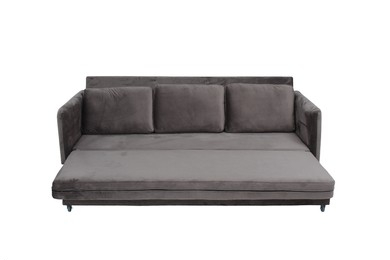
A sleeper sofa is designed to convert into a bed, making it a versatile option for guest rooms or small spaces. These sofas may be heavier or larger than standard sofas due to the additional bedding components.
Which Types of Couches Are Easiest to Transport?
Some types of couches are easier to transport than others. Loveseats and smaller sectionals are generally easier to transport in a pickup truck bed than larger standard sofas or heavy recliner sofas.
Sleeper sofas may also be more difficult to transport due to their size and weight.
Couch Materials and their Impact on Transportation.
The material of the couch can also impact its transportability. Leather and synthetic materials are typically easier to clean and more durable than fabric, but they may be heavier and more difficult to move.
Common Mistakes to Avoid When Transporting a Couch
Transporting a couch in a pickup truck bed can be challenging, but with proper planning and execution, it can be done safely and efficiently. Here are some common mistakes to avoid when transporting a couch:
- Not measuring the truck bed or couch: Failing to measure either the truck bed or couch can lead to improper fitting and an unstable load.
- Overloading the truck: Overloading the truck bed beyond its weight capacity can damage the vehicle and put you and others on the road in danger.
- Not properly securing the couch: Failing to properly secure the couch can result in it shifting during transport, leading to damage or an accident.
- Incorrectly lifting the couch: Improper lifting techniques can lead to injuries or damage to the couch.
- Not using the proper equipment: Failing to use the proper equipment, such as straps or ropes rated for the weight of the couch, can result in an unstable load.
To prevent these mistakes from happening, follow these tips for safely transporting a couch in any situation:
- Measure the truck bed and couch before loading to ensure a proper fit.
- Do not exceed the weight capacity of the truck bed.
- Use proper lifting techniques, such as bending at the knees and lifting with the legs, to avoid injuries.
- Use high-quality straps or ropes to secure the couch to the truck bed.
- Use multiple straps or ropes to secure the couch from different angles to prevent it from shifting during transport.
- Check the straps or ropes periodically during transport to ensure they remain tight and secure.
- Drive carefully and avoid sudden stops or turns that could cause the load to shift.
FAQs
How do you fit a couch in a pickup truck?
To fit a couch in a pickup truck, start by measuring the couch and the truck bed to ensure a proper fit. Next, determine the best orientation for the couch in the truck bed and strategize for safe loading and unloading. Secure the couch in the truck bed using high-quality straps or ropes to prevent it from shifting during transport.
How much furniture can fit in a pickup truck?
The amount of furniture that can fit in a pickup truck depends on the size of the truck bed and the dimensions of the furniture. Proper measurement and strategic loading can help maximize the space and safely transport as much furniture as possible.
How do you measure the bed of a pick-up truck?
To measure the bed of a pickup truck, start by measuring the width between the wheel wells and the length from the tailgate to the bulkhead. These measurements will give you an accurate dimension of the bed.
How wide is the inside of a pickup truck bed?
The width of the inside of a pickup truck bed can vary depending on the make and model of the truck. However, the distance between the wheel wells is typically around 4 feet, allowing for a variety of items to be transported in the bed.
What size is a full-size pickup truck bed?
The size of a full-size pickup truck bed can vary depending on the make and model of the truck. However, a standard full-size truck bed is usually around 8 feet long and can vary in width from around 5.5 feet to 6.5 feet, with a depth of around 2-3 feet.